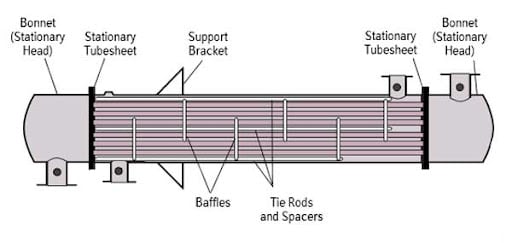Hi,
Is it a valid assumption to model sections of a heat exchanger individually for an explosive event? In the picture below, if rupture takes place in the head, is it appropriate to ignore the shell side as the tubesheet would isolate the explosion within the head? For those experienced with hydrocarbon explosions, does the tubesheet do a good job of completely isolating the forces of an explosion?

Is it a valid assumption to model sections of a heat exchanger individually for an explosive event? In the picture below, if rupture takes place in the head, is it appropriate to ignore the shell side as the tubesheet would isolate the explosion within the head? For those experienced with hydrocarbon explosions, does the tubesheet do a good job of completely isolating the forces of an explosion?

